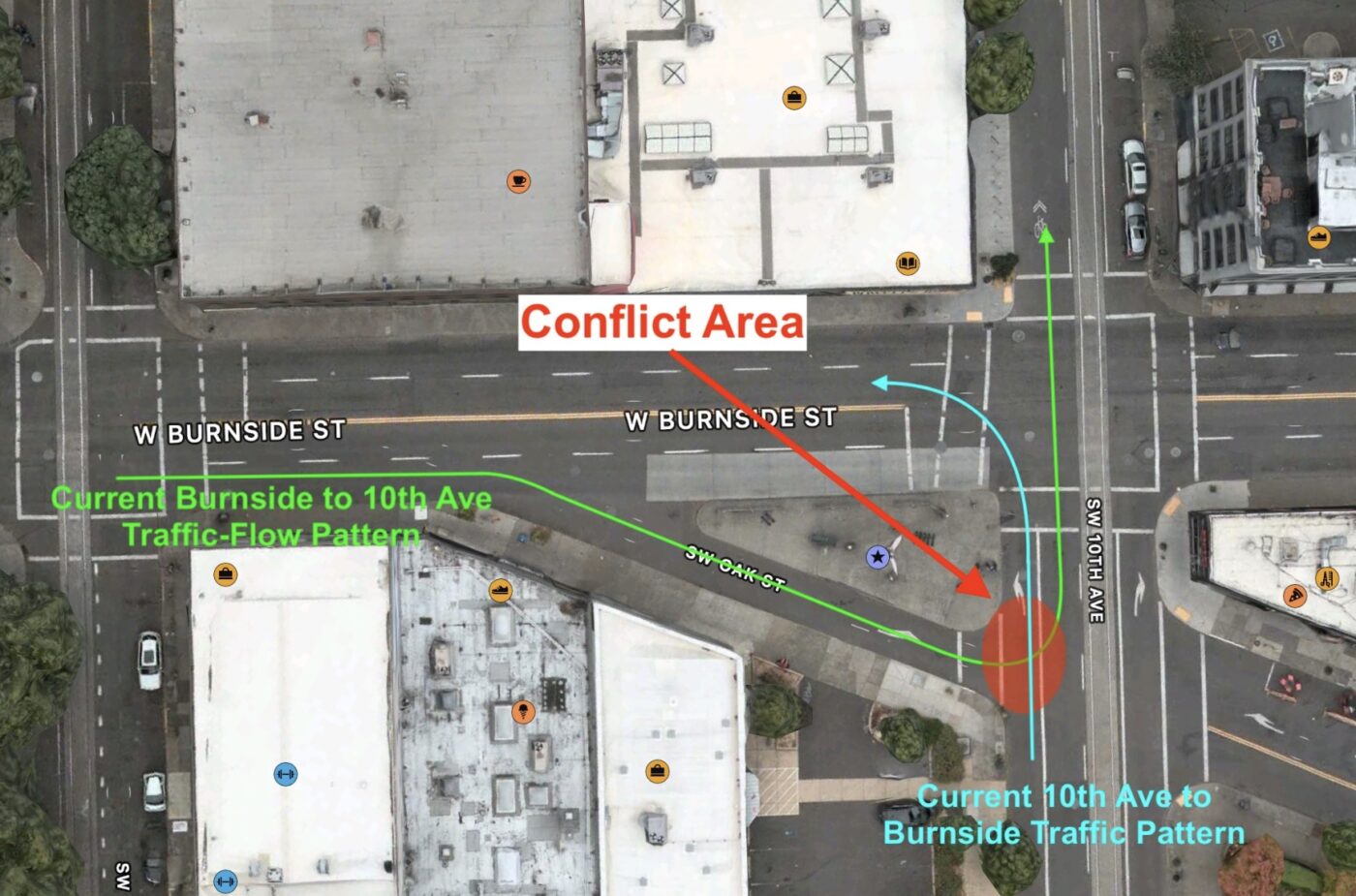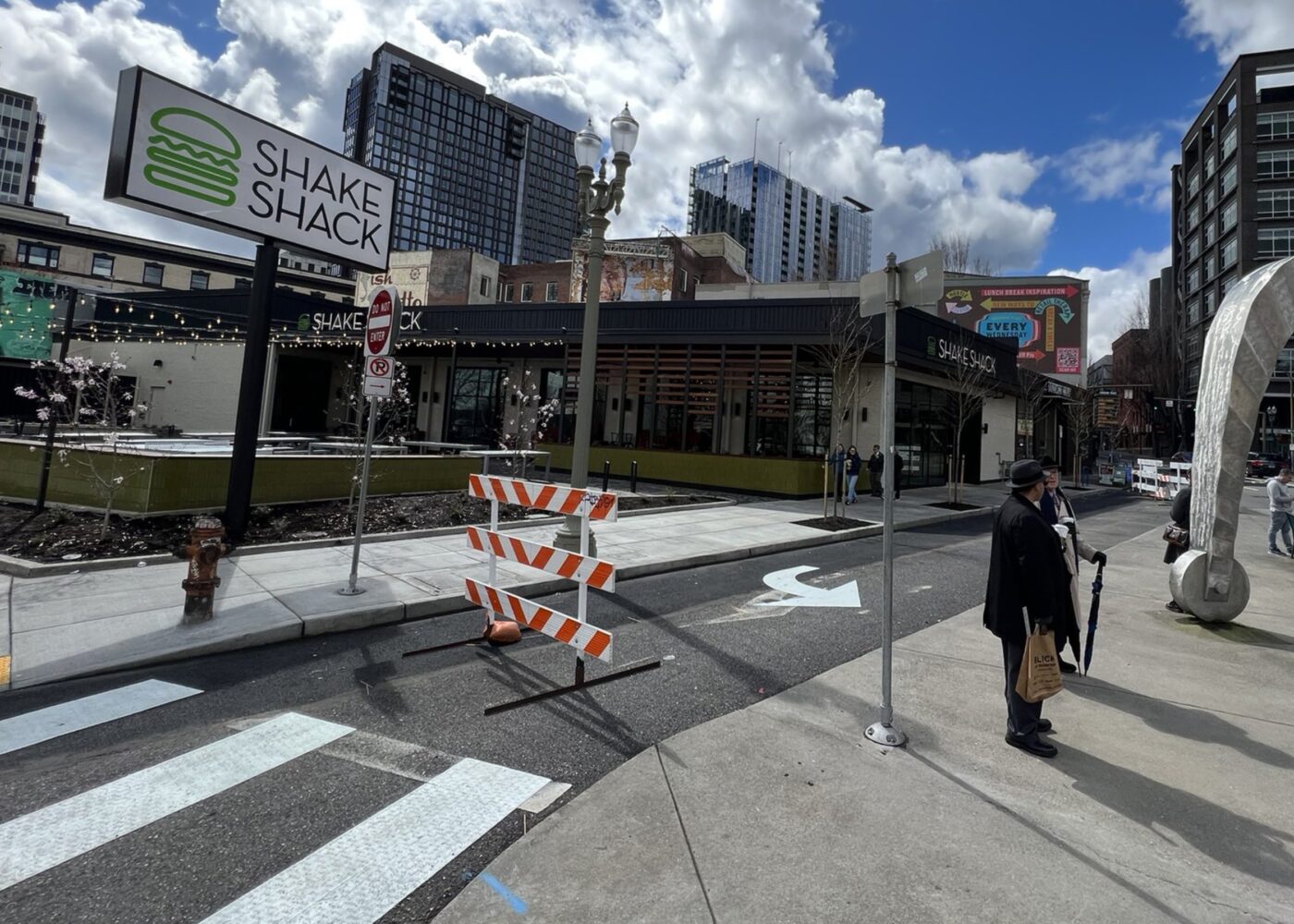
 The slip lane between West Burnside and 10th as seen on April 14th (left) and May 3rd (right). (Photos: Jonathan Maus/BikePortland)
The slip lane between West Burnside and 10th as seen on April 14th (left) and May 3rd (right). (Photos: Jonathan Maus/BikePortland)On April 14th, just 10 days before the Shake Shack opened on West Burnside and 10th in downtown Portland, I walked passed it and was very disappointed. The new place itself looked amazing and I was so excited for how this fast food joint would activate this very popular and busy corner of our city. The one thing dragging this space down has always been the slip lane that separates it from a large median with a bus stop and huge public art sculpture where thousands of people a day wait to cross Burnside to get to and from Powell’s City of Books and other destinations.
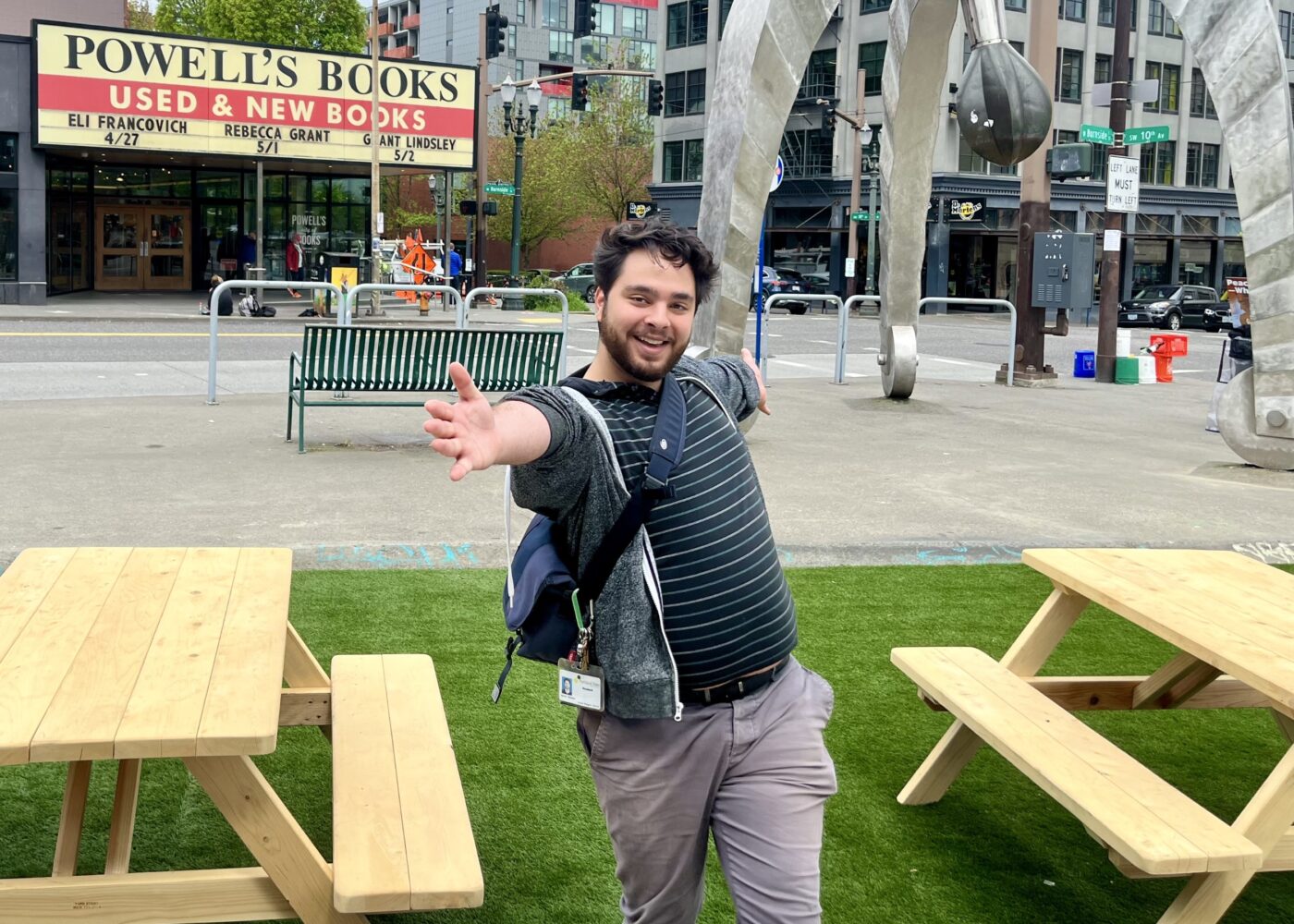 Xavier Stickler. (Photo courtesy Xavier Strickler)
Xavier Stickler. (Photo courtesy Xavier Strickler)
Slip lanes are terrible and should be removed everywhere. And I assumed, given this redevelopment and the context around this location, that the Portland Bureau of Transportation would do the right thing. But not only was the lane still there, the lane markings had just been repainted! I figured we’d missed a perfect opportunity to create a human-centered space in the heart of downtown.
Little did I know that a behind-the-scenes effort to create a plaza on the lane had been going on for about eight months. And by the time Shake Shack opened, that lane was transformed into a relaxing green space with picnic tables, astroturf, and planters.
I’ve since learned this wonderful new space would not exist if it wasn’t for the activism of 23-year-old Portland State University architecture and urban planning student Xavier Stickler. From September to April, Stickler navigated red tape and the politics of two neighborhood associations (both of which are typically dominated by people a half-century older than him), to see his vision through. Turns out, the idea first came to him on a visit to Powell’s.
Here’s the story…
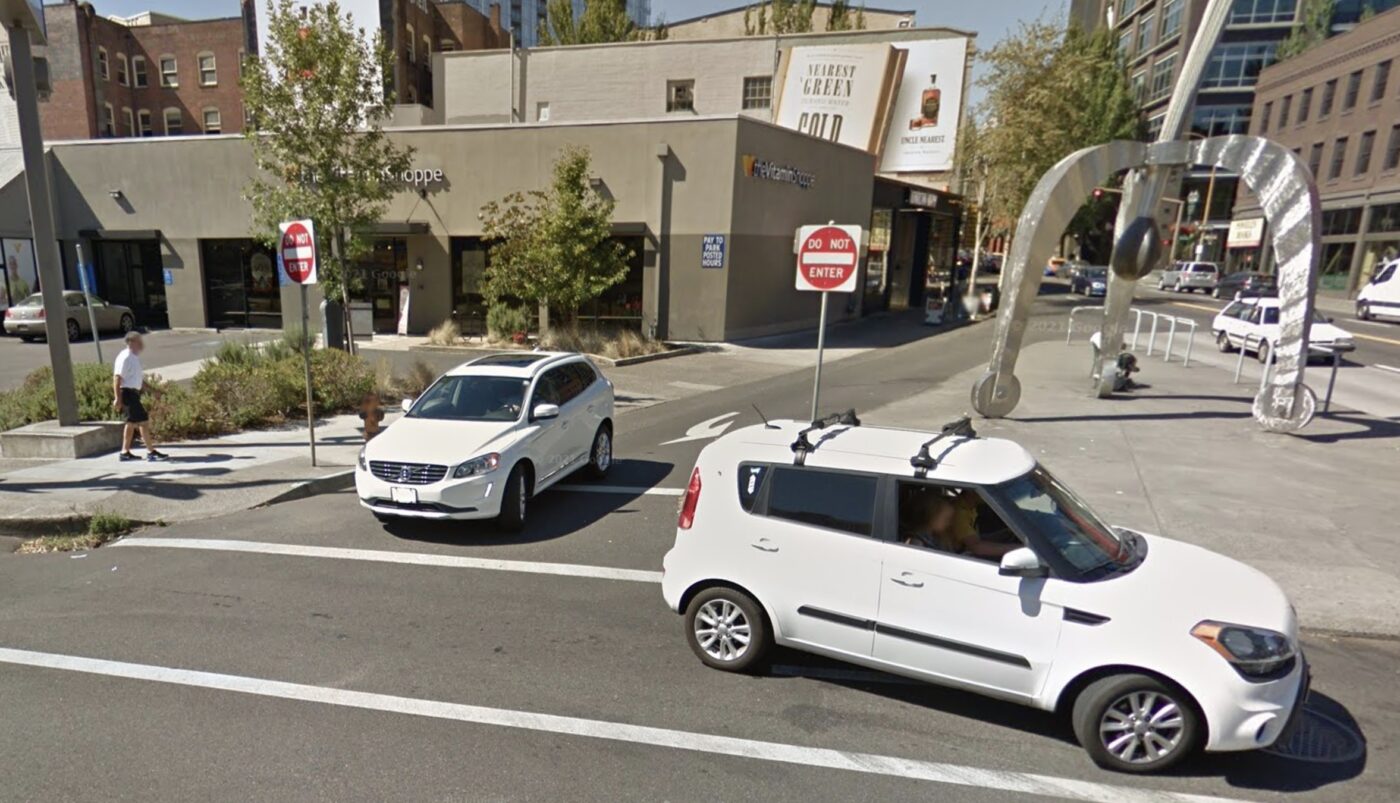 Before
Before After
AfterStickler was at Powell’s with his friend (and fellow urbanist) Bradley Bondy in September 2022 and they noticed the slip lane was closed for Shake Shack construction. Bondy, who co-hosts a podcast about Portland with Stickler, said he felt it should stay that way. “I kind of thought, ‘Well, I don’t think the existing political establishment will be in favor of that. I think that’s a little too extreme’,” Stickler recalls. “But then the more I thought about it, I realized it’s a really bad design.”
Used by drivers to make a two-stage left turn (since left turns are not allowed off Burnside), the slip lane (which is actually SW Oak Street that sets off diagonally and creates a triangle-shaped cutout at Burnside) dumped drivers into the far left lane of SW 10th Avenue. And since the left lane is left-turn only, anyone wanting to go north on 10th had only 19 feet to merge across the lane. Making matters worse is that many drivers would nudge into the crosswalk in order to encourage cross-traffic to stop. Backups at this intersection were common, and they would often cause delays in the streetcar which runs in one of the middle lanes. “I just remember it being a disaster,” Stickler said. “It’s dangerous and ineffective.”
So Stickler dove head-first into researching the issue and before the end of the month he’d created a presentation that laid out the problems and his solution: a new public plaza he called the Burnside Pocket Park. He then used his position on the Land Use & Transportation Committee of the Downtown Neighborhood Association to curry support and the group ended up endorsing his plan. In a letter to City Council, the DNA wrote that the plaza would, “Greatly improve pedestrian safety, create a vibrant public place near one of the central city’s foremost destinations, and improve traffic flow at this key intersection…. Pedestrianizing this prime corner is everyone’s interest, and we request that the city do so as soon as possible.”




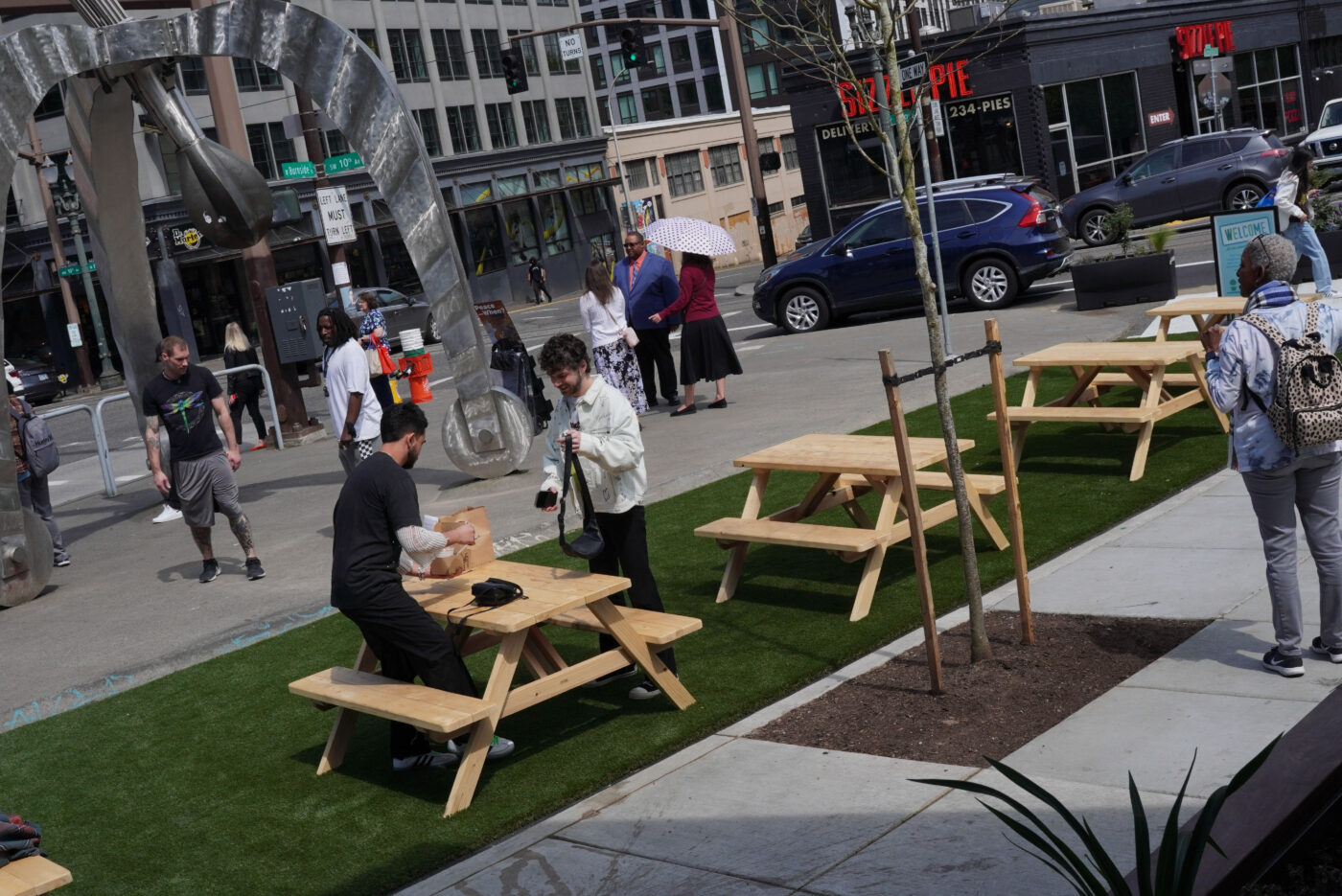

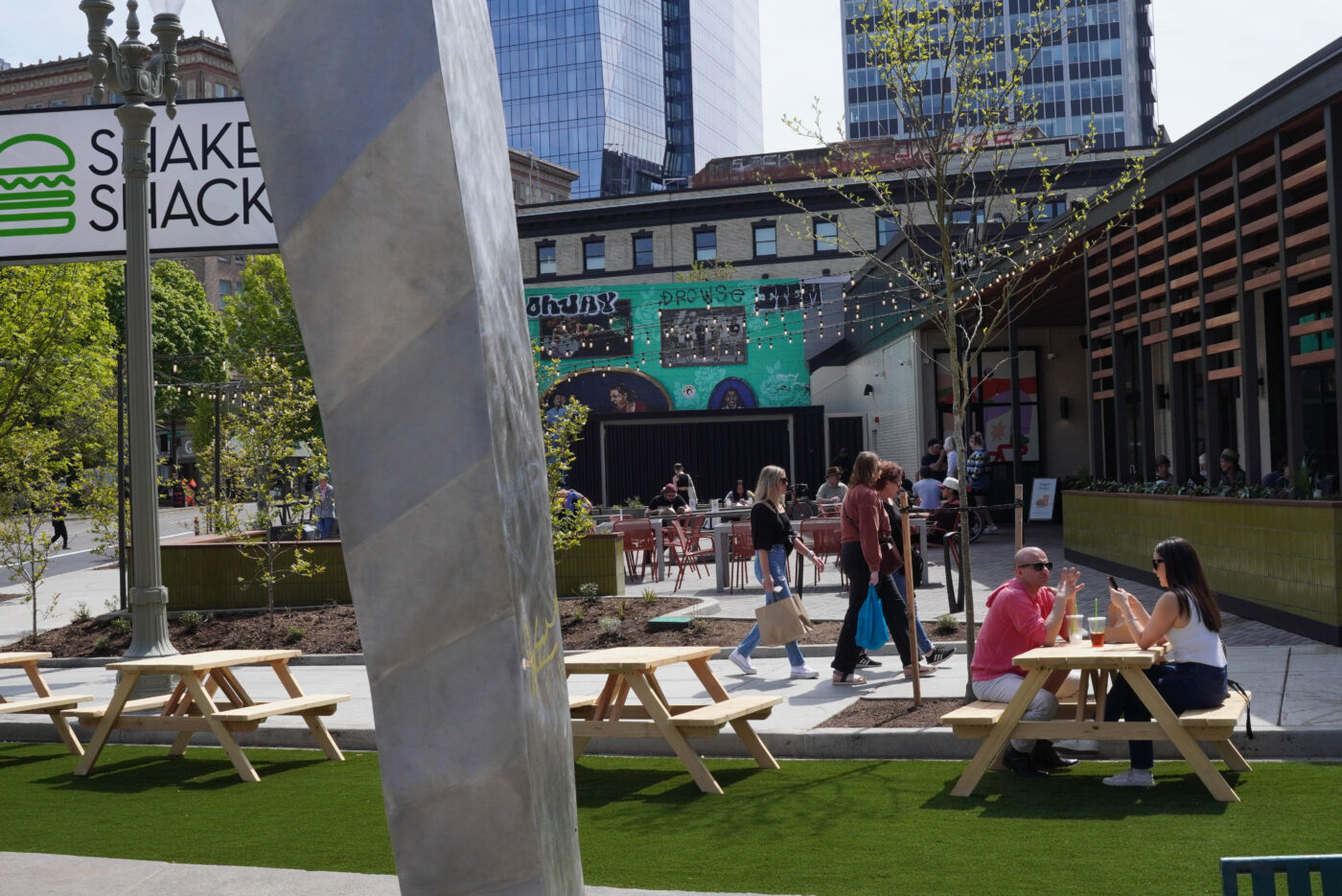


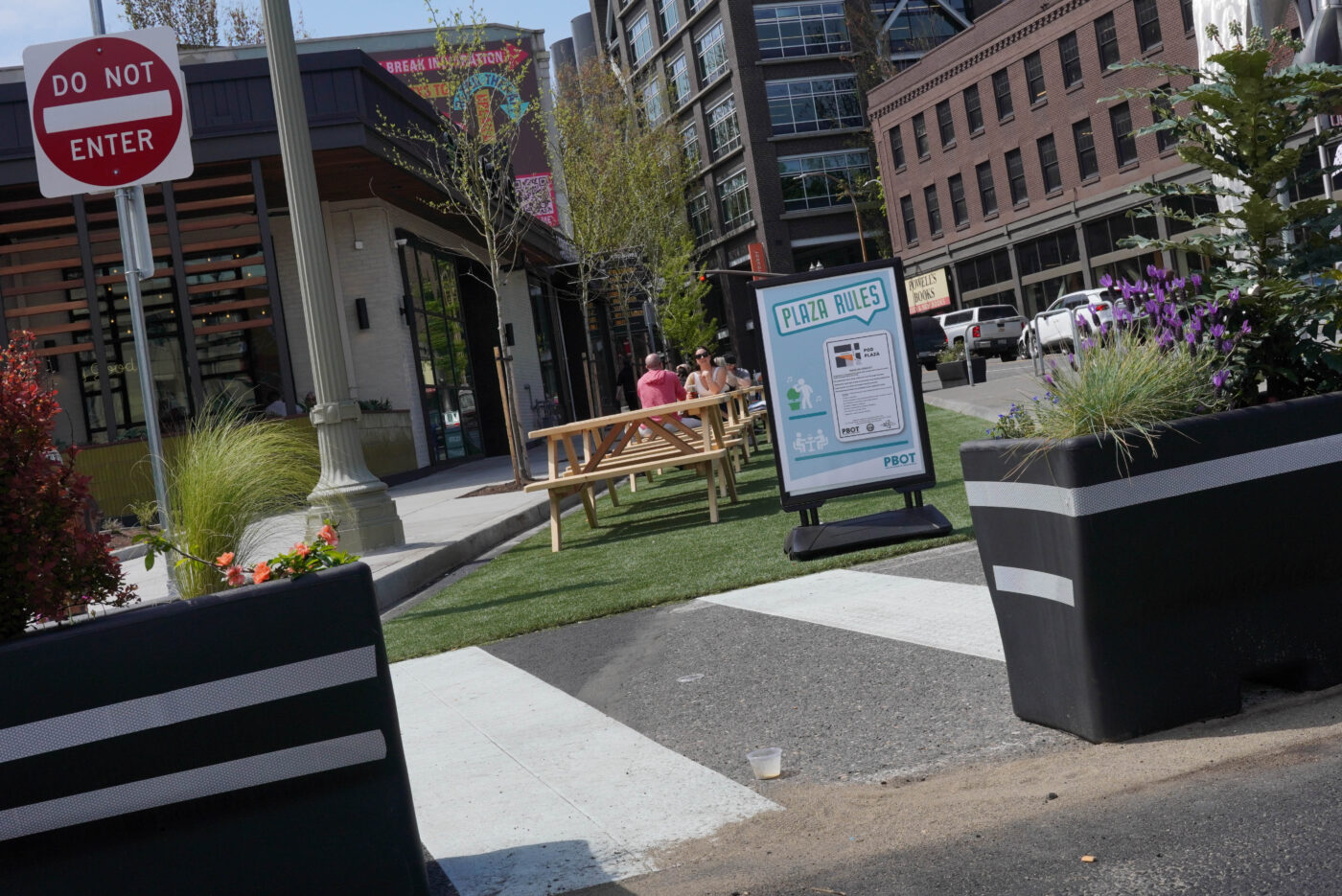

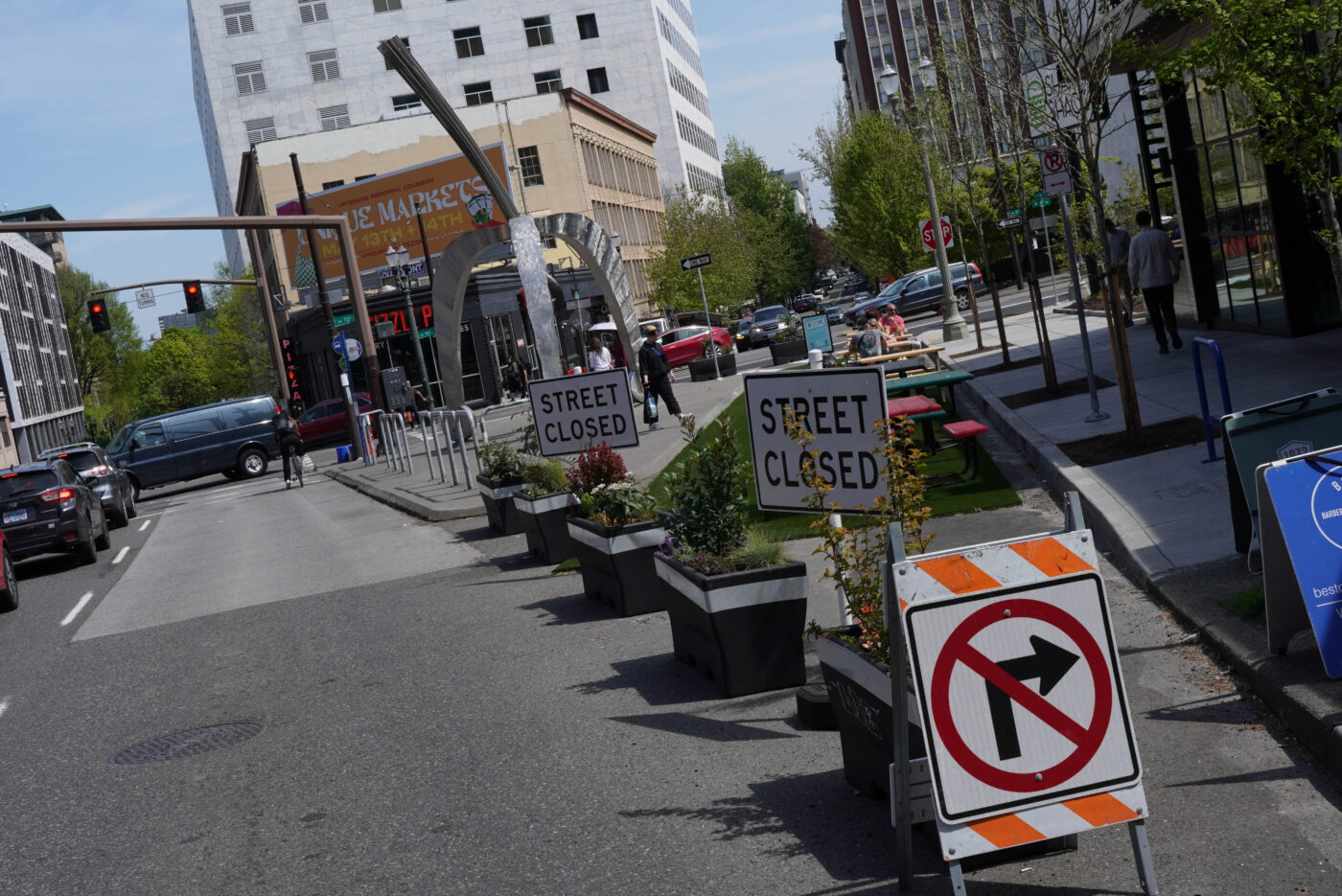


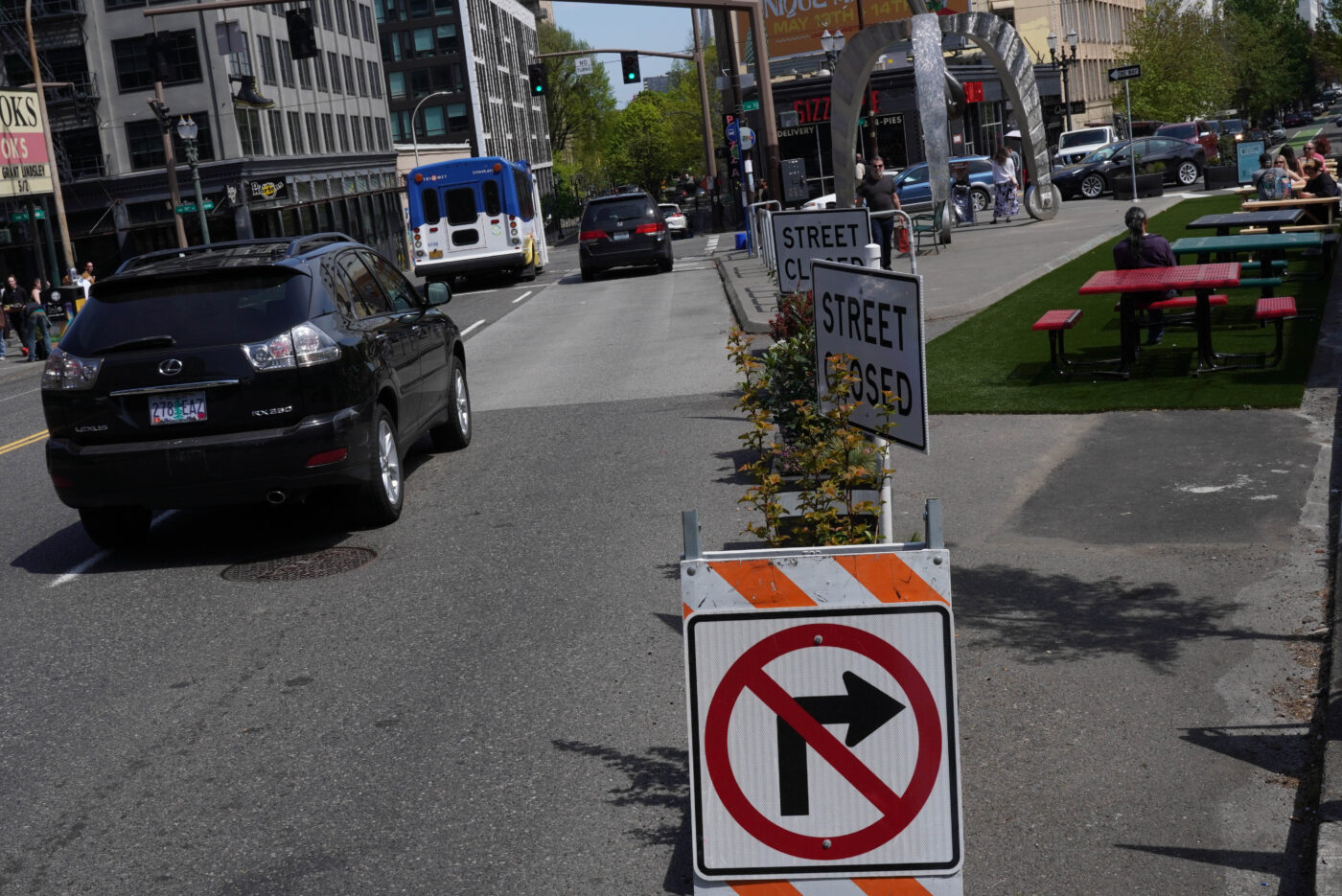
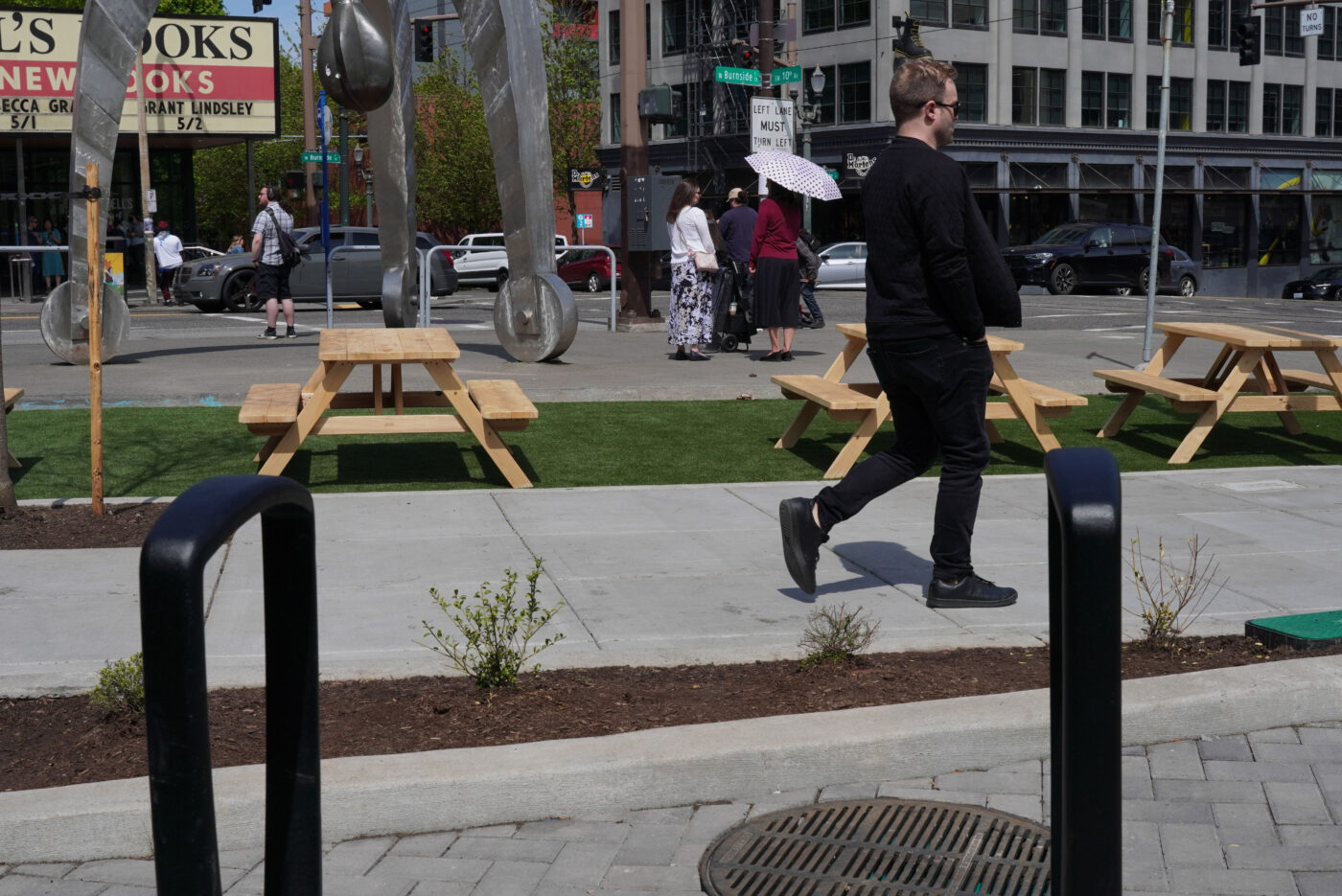




With wind in his sails, Stickler then crossed over Burnside into the Pearl District and presented to their neighborhood association. They loved it too. In their November 8th letter, the Pearl District Neighborhood Association wrote, “We are hopeful that implementing this plaza will provide a key placemaking opportunity at a time when the City is strongly encouraging visitors to return downtown, and will further bridge the divide between the Pearl and Downtown neighborhoods.”
“If I died today I accomplished nothing else in life, I will have at least made that one intersection suck a little bit less.”
Luckily for Stickler, the idea already had some momentum before he got involved. Closing the slip lane has been in various city plans going back as far as 2007. The 2015 West Quadrant Plan called on the city to, “Explore opportunities for consolidating and/or redeveloping Burnside’s ‘jug handles’ (triangular shaped spaces) into public spaces.”
With both neighborhoods in his corner, he fired off a letter to Portland City Council and by April he had confirmed with the PBOT project manager that he won: The slip lane would not be reopened to cars and would become a plaza! PBOT spokesperson Dylan Rivera says it’s called Pod Plaza (after the name of the sculpture nearby) and is part of the city’s growing Street Plaza Program. Rivera added that they expect to make this project permanent with more significant capital enhancements coming in 2024.
It’s a great victory for Stickler and his friend Bradley Bondy, both of whom are part of a youth movement in the urbanism scene who first connected in the Portland chapter of the “NUMTOT” (New Urbanist Memes for Transit-Oriented Teens) Facebook group which is known as MAXed Out Memes for Overcast Teens. “This was a flatly bad intersection, so it was admittedly low-hanging fruit,” Stickler acknowledged. “But I am extremely pleased. If I died today I accomplished nothing else in life, I will have at least made that one intersection suck a little bit less.”
And he hopes it will lead to more transformations. “I hope this can be a good reminder to downtown interests and neighborhood associations that active transportation and public places are not the enemy — they’re our greatest asset. Projects like this are what draw people to Portland: goofy-little pockets of charm and street life. We need more of them, not less!”

